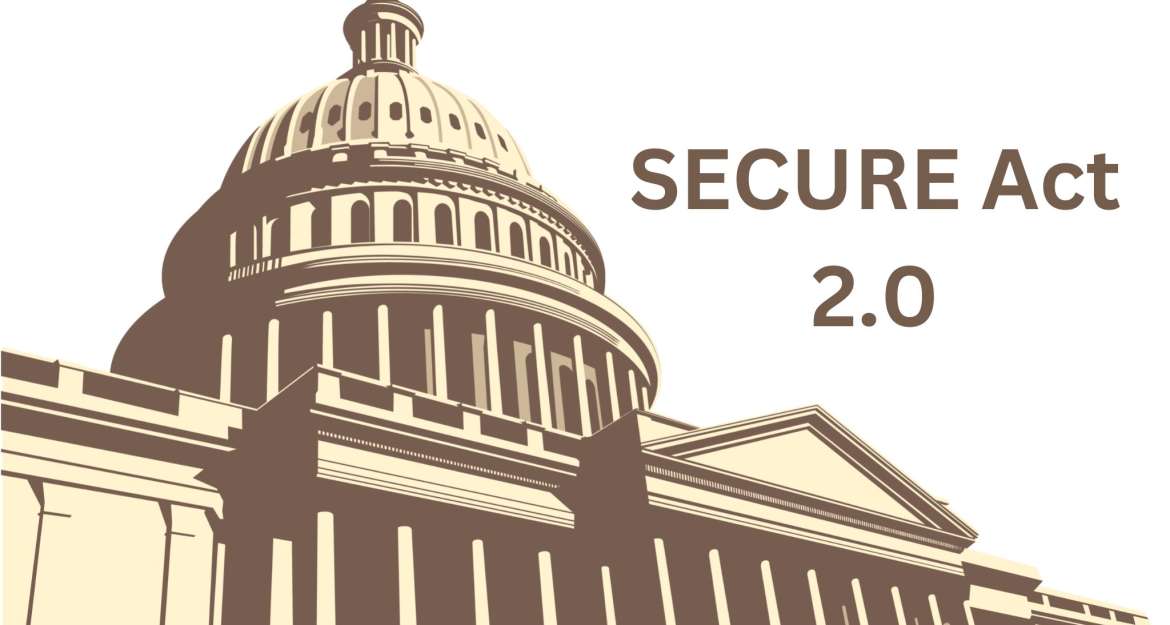Part 2- SECURE Act 2.0 Updates in 2024: Four ‘Must Know’ Items
This is the second in a two-part series examining the updated provisions of the SECURE Act. In this portion we delve deeper into the specific topics previously outlined in part 1.
1. SECURE ACT required minimum distribution dates and penalties for missed distributions
Before we focus on the provisions highlighted in the previous post, a reminder that the SECURE Act is requiring that those who were born between 1951 and 1959 take RMDs at age 73. Those born in 1960 and later will have their RMD pushed back to age 75.
Penalties for missed withdrawals have been reduced from 50% to 25% with a three-year look back. If an account owner fails to withdraw the full amount of the RMD by the due date, the owner is subject to an excise tax equal to 25% of the amount not withdrawn for 2023 and later years.
Going even further, the Secure 2.0 Act reduced the tax rate to 10% if the error is “timely corrected,” which means corrected within two years. The account owner should file Form 5329, Additional Taxes on Qualified Plans (Including IRAs) and Other Tax-Favored Accounts, with their federal tax return for the year in which the full amount of the RMD was required but not taken.
2. A way to roll over unused 529 plan money to Roth IRAs
Starting in 2024, Secure Act 2.0 allows a tax- and penalty-free rollover from a 529 account to a Roth IRA. More specifically, after 15 years, beneficiaries of 529 college savings accounts are permitted to roll over funds from a 529 account in their name to a Roth IRA account also in their name. These rollovers are subject to a number of limitations, including an aggregate lifetime maximum limit of $35,000. In addition, the rollover is treated as a contribution towards the annual Roth IRA contribution limit, which is currently $7,000.
Why is this so exciting? The rollover benefit is a benefit to parents who saved money in 529 plans but found themselves facing hefty tax bills if they wanted to withdraw the funds because they were no longer needed for higher education costs.
The shift will allow parents and grandparents who are funding 529s for their children or grandchildren to transfer extra dollars to retirement savings for the beneficiary if they decide to go to a less expensive school, receive a scholarship or forgoes college altogether.
3. Expansion of QCDs and charitable contributions
Qualified Charitable Distributions (QCDs) were traditionally capped at $100,000 per year…and that amount didn’t go up each year. The SECURE Act 2.0 allows the $100,000 limit to be adjusted annually for inflation (rounded to the nearest $1,000) beginning in 2024. The new QCD limit for 2024 is $105,000, which is a $5,000 increase from 2023. Note that for gifts to count, they must come directly from the IRA by the end of the calendar year and must be made prior to taking RMDs if you want to offset the RMD. Additionally, there are limitations as QCDs cannot be made to all charities, such as donor-advised funds or private foundations.
Moreover, as of 2023, a one-time QCD of up to $50,000 to charities was allowed through “split entities,” such as charitable remainder annuity trusts, charitable remainder unitrusts or charitable gift annuities (CGA). Starting in 2023, such people who are 70½ or older could make a one-time gift up to $50,000, adjusted annually for inflation, to a charitable remainder unitrust (CRUT), a charitable remainder annuity trust or a charitable gift annuity (CGA). Effective for 2024, the one-time distribution from an IRA to a split-interest entity increased to $53,000, which is up from $50,000 in 2023.
Why is this so exciting? By creating this new charitable giving opportunity, the Act is expanding the ways in which you can reduce your tax bill by doing this once-in-a-lifetime gift. And by expanding the definition of a charity to include a charitable trust or CGA, the Act creates a way for you to get income while also making a $53,000 QCD.
Essentially, the new rule on so-called qualified charitable distributions expands the types of “charities” that can receive the gift. Although the split-interest entity technically includes a charitable remainder trust, most practitioners agree that this is not a practical solution given the time and the costs involved in administering a trust with just over $50,000. Charitable remainder annuity trusts make sense if the values go down, and charitable remainder unitrusts are preferred if the investments within the trust appreciate. However, these trusts are expensive to administer and are not typically put in place for smaller amounts.
4. No more RMDs for Roth 401(k)s
Beginning in 2024, RMDs are not required from Roth employer accounts during an employee’s lifetime. This conforms to the rule that already applies to Roth IRA account owners and puts all Roth accounts on an even playing field.
This article is provided for informational purposes only and should not be construed as tax advice. Consult your tax professional.
Sources: Horsesmouth.com, IRS.gov
Philip Lockwood | Founder + Managing Partner
Address | 1501 Ingersoll Ave Ste 201 Des Moines, IA 50309
Phone | 515-274-8006
Email | plockwood@parklandrep.com
Website | Lockwoodfinancialstrategies.com
Securities offered through Parkland Securities, LLC, member FINRA (FINRA.org) and SIPC (SIPC.org). Investment Advisory services offered through SPC, a Registered Investment Advisor. Lockwood Financial Strategies, LLC is independent of Parkland Securities, LLC and SPC
Securities offered through Parkland Securities, LLC, member FINRA/SIPC.


